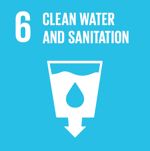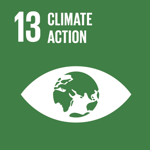Changes in Water Productivity in the Southern Cone
 Chile
Chile
 Argentina
Argentina
 Syria
Syria
 Uruguay
Uruguay
 Bolivia
Bolivia
Executive Summary
Agriculture is one of the most important economic activities in Latin America and one of the main water users. New climate scenarios indicate that there will be large variations in water availability, which could result in floods or droughts, and significant economic losses. Irrigation is one of the most relevant practices for adapting agriculture to climate change, but given the resource scarcity in many areas, it is necessary to improve its efficiency.
This project helped to better understand the behaviour of different crops under variable water availability conditions, and to adjust response models to predict future performance. Moreover, the project evaluated different strategies to mitigate, adapt and capitalize on the potential effects of climate change, in order to support decision-making for public and private investments in southern cone countries.
The technological solution
The characterization of the 10 watershed studied in the four countries allowed identifying the main crops produced and the existing irrigation infrastructure, as well as establishing the baseline on the availability of water and its use in the different production systems. On the other hand, field trials allowed obtaining information regarding the response of different crops to restrictive water conditions and thus establish production functions and minimum productivity conditions in scenarios of possible droughts. For each irrigation strategy tested and the result obtained, the water productivity (Kg / m3) was calculated, observing the positive changes that are generated; but many times opposed to the productivity of the land, expressed as Kg / ha. It was concluded that for drought conditions, the use of water productivity is key, while for normal or humid years the productivity of the land should be sought.
Results
10 watershed were cararacterized (three in Argentina and Chile and two in Bolivia and Uruguay) and a baseline was built including the availability of water and its relationship to production systems and irrigation infrastructure. Through field trials, information was obtained on the response of the main crops to water-restrictive conditions, establishing production functions and minimum productivity conditions in possible scenarios.
In Argentina, the following increases in water productivity were found, comparing the controls vs the efficient use: in olive (San Juan) from 0.28 to 0.35 kg oil/m3, olive tree (Junín, Mendoza) from 1.50 to 2.10 kg/m3, in cotton (Santiago del Estero) from 0.33 to 0.57 kg/m3 and in soybeans (Santiago del Estero) from 0.46 to 0.65 kg/m3.
In Bolivia, the following increases in yields were found comparing controls vs irrigation system: potato from 8000 to 57,000 kg/ha; tomato from 35,000 to 106,900 kg/ha and grapes from 20,00 to 60,900 kg/ha.
In Chile, the following increases in water productivity were found by comparing controls with the improved irrigation system: table grapes (Limarí, Nueva Aurora) from 3.20 to 4.59 kg/m3; pisco grapes (Limarí, Chilecito) from 4.47 to 4.88 kg/m3; pisco grapes (Limarí, La Chimba) from 6.56 to 7.81 kg/m3; table grapes (Aconcagua, Flame Seedless) from 2.08 to 5.14 kg/m3; table grapes (Aconcagua, /Thompson Seedless) from 2.47 to 5.28 kg/m3; cherries (Cachapoal, La Compañía) from 0.40 to 0.51 kg/m3 and cherries (Cachapoal, El Abra) from 0.84 to 1.85 kg/m3.
In Uruguay, comparing controls against the irrigation system, productivity in fodder was increased from 7,500 to 11,000 kg MS/ha; olive oil (young plants) from 650 to 1,000 kg/ha and potato from 23,000 to 38,500 kg/ha.
25 undergraduate and graduate students were trained and 22 people attended conferences and other technical meetings.
Beneficiaries
Direct beneficiaries have been the numerous researchers, professionals and pre- and graduate students involved in the project , as well as the 1053 producers from the four countries that were informed about the results of the project.
Indirectly, thousands of producers who will access information produced in the projec will benefit, as well as the general population thanks to the most efficient use of water in the region.
Sustainable Development Goals



Participating Organizations
Executor
- Instituto de Investigaciones Agropecuarias (INIA) - Chile
Co-executor
- ICARDA - Siria
- Instituto Nacional de Investigación Agropecuaria (INIA) - Uruguay
- Instituto Nacional de Tecnología Agropecuaria (INTA) - Argentina
Associated
- Programa Cooperativo para el Desarrollo Tecnológico Agroalimentario y Agroindustrial del Cono Sur (PROCISUR) - Uruguay
- UMSA - Bolivia




